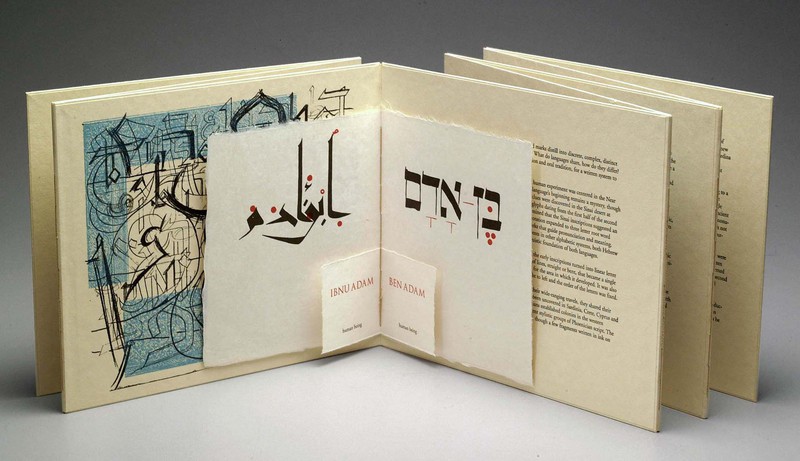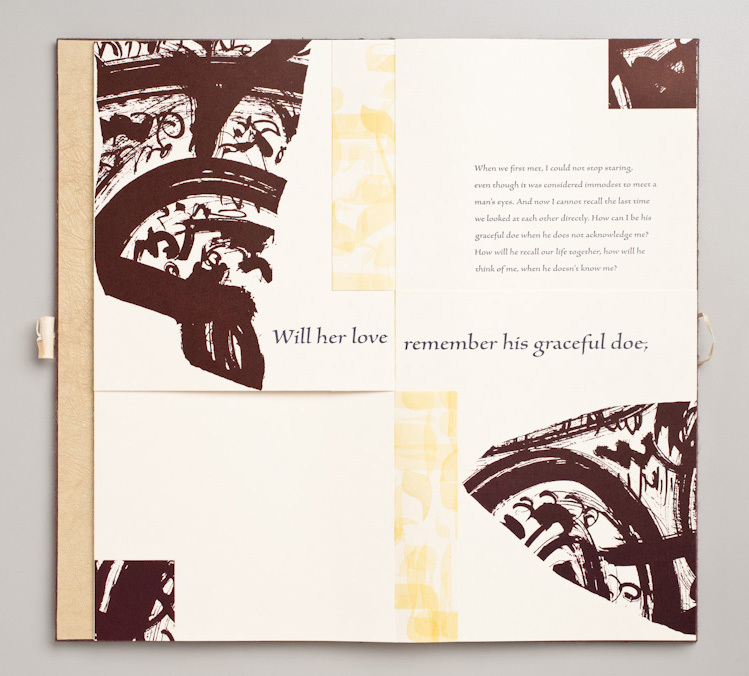Interview Part II
PD: It seems particularly fitting that we are able to show exhibits of both your artwork and your artist’s books, as you have created books based on your art, and artwork stemming from your books. How do these two expressive forms feed into each other?
LA: I continually seek a complete work that contains both the beauty of gesture and a core of meaning.
I engage with classic texts, and the result is synthesis of tradition and modernity. The mark making of printmaking and calligraphy – one repeatable (printed) and the other unique (hand drawn), inspire my art. And this is something I strive to find in both my art and my artist’s books.
For me, planning and then executing a limited edition artist’s book takes a long time: conducting research, making many book models, deciding on text, type face, imagery, paper, means of printing and then finally printing and editioning. In response to this, creating drawings, monoprints, and mixed media works permits a type of directness that is a much-needed contrast in my artistic practice.
PD: How has your work on books changed over the course of your career?
LA: Over the years, my book projects have become more complex and the edition numbers have gotten smaller! I have a wonderful working relationship with Linda Lembke, an artist/bookbinder based in Vermont. In collaboration with Linda, I have been able to experiment with innovative binding structures and increase the scale of my work.
Several artists in particular have inspired and informed my work: the Russian Constructivist, El Lissitsky (For The Voice, 1923), the Dutch artist/printer H. N. Werkman (Chassidische Legenden, 1941) and the French artist Sonia Delaunay (La Prose du Transsiberien et de la Petite Jehanne de France, 1913). Each of these artists, working in the book format, created art of great power, beauty and meaning.

Interview Part I


